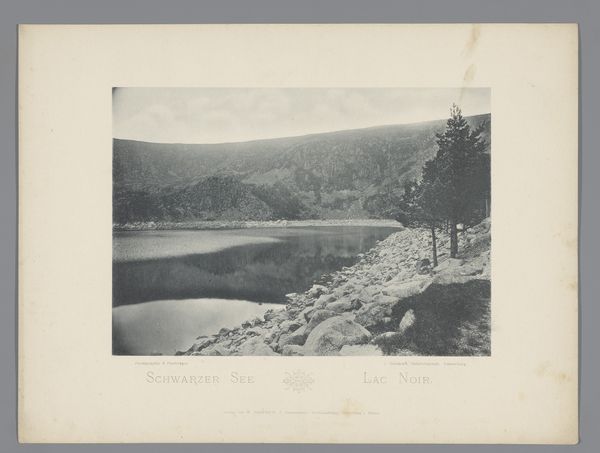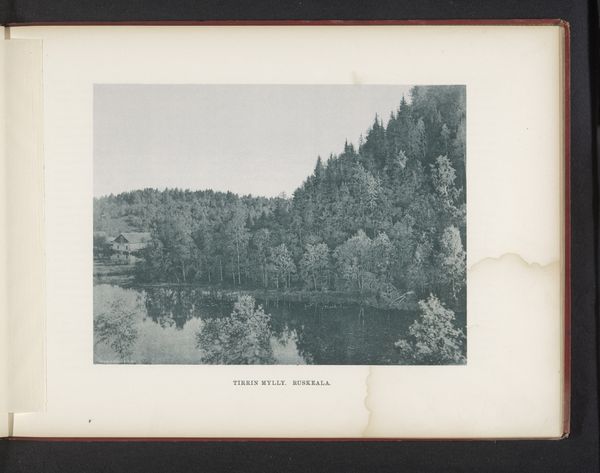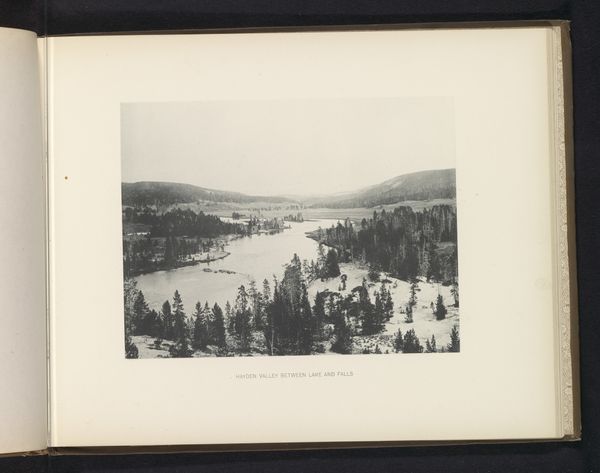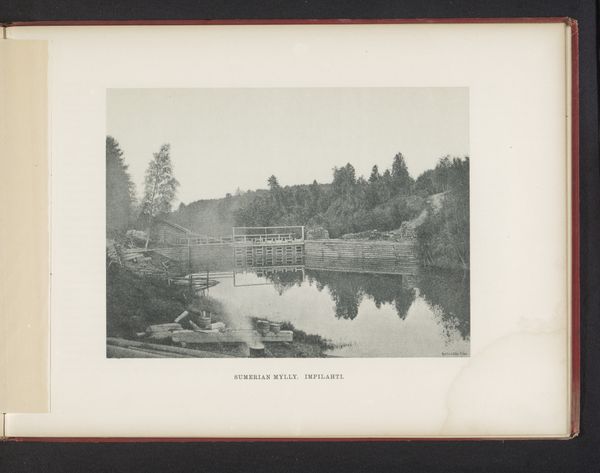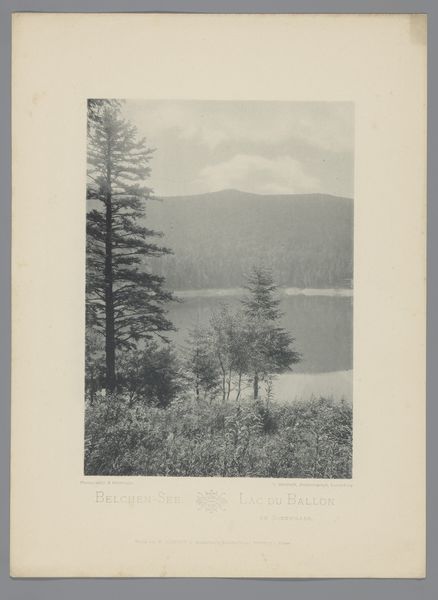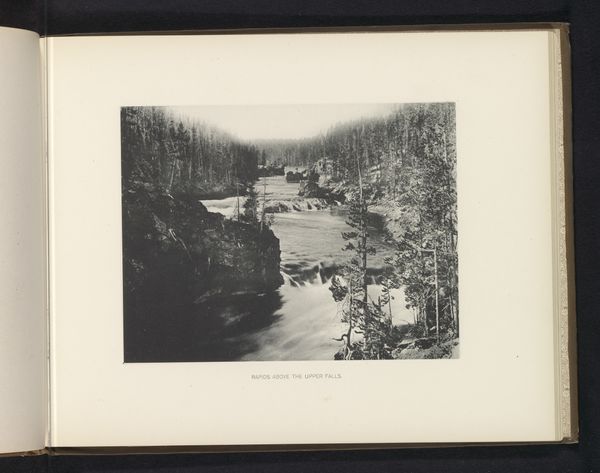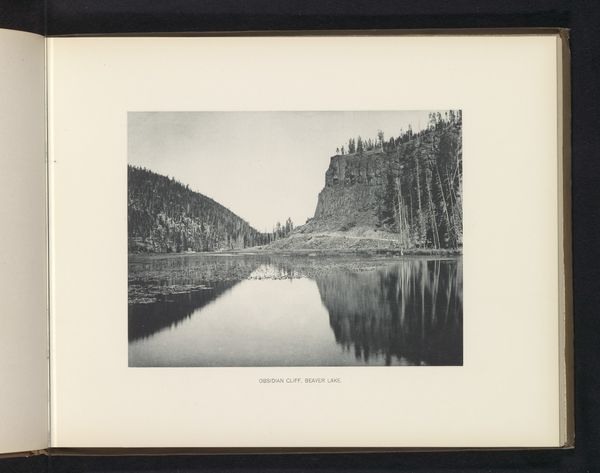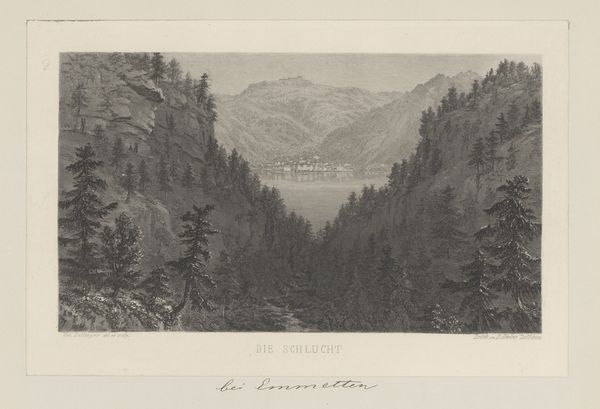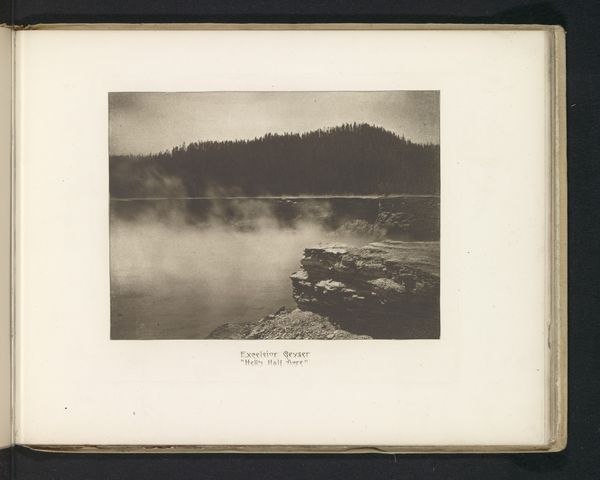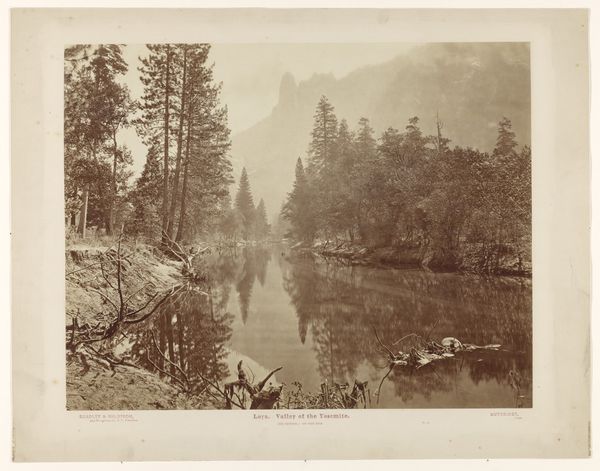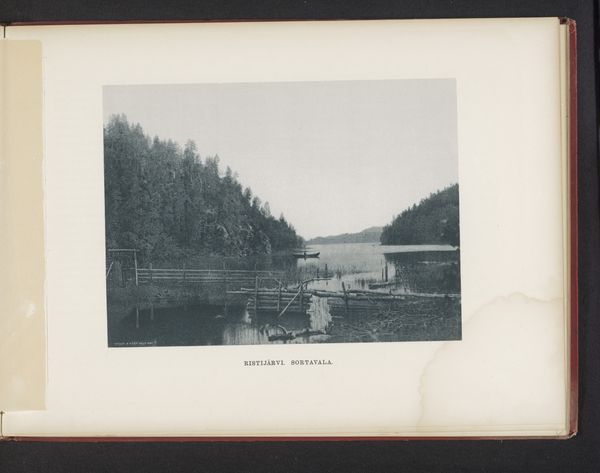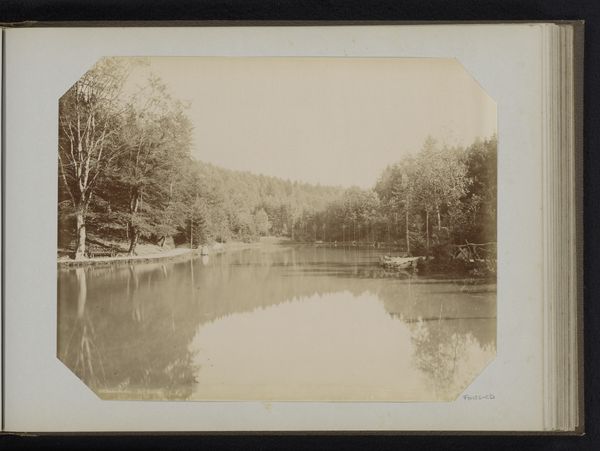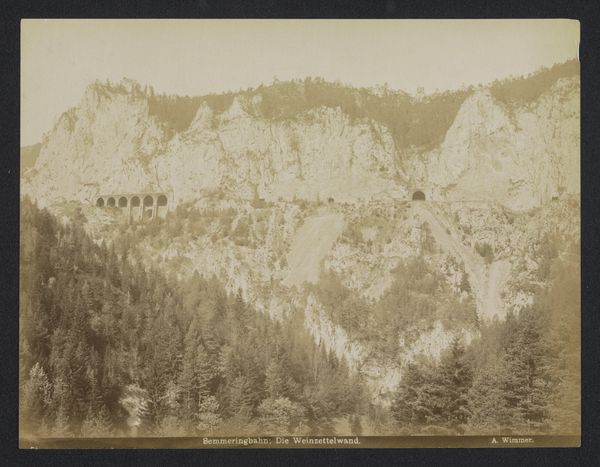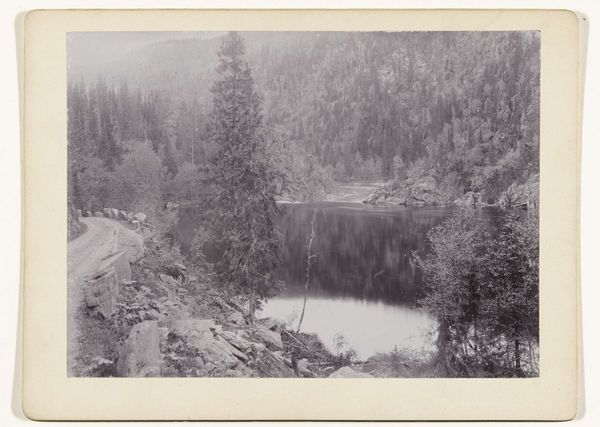
print, photography, gelatin-silver-print
#
pictorialism
# print
#
landscape
#
photography
#
gelatin-silver-print
Dimensions: height 152 mm, width 215 mm
Copyright: Rijks Museum: Open Domain
Editor: This is "Gezicht op een meer nabij Soultzeren" by Charles Bernhoeft, a gelatin silver print made before 1894. There's such stillness in this landscape; the muted tones and the reflection on the water give it a meditative quality. How do you interpret this work? Curator: It's tempting to view this simply as a pretty landscape, but I think it's richer than that. Consider the context: the rise of industrialization in Europe, alongside movements like Romanticism and its search for sublime, untamed nature, as well as early photography. The individual standing at the lake's edge looks almost burdened. Editor: Burdoned how? Curator: I mean as symbolic of humanity’s precarious relationship with nature. We seek its beauty, its restorative power, but our presence—marked here by the constructed ledge and the figure itself—can also represent exploitation and even environmental disruption. Given the burgeoning colonial era, could this quest for pristine landscapes be a comment on how we treat both natural resources and Indigenous communities, viewed through a similar extractive gaze? Do you think Bernhoeft is positioning the viewer as complicit in this act of observing/taking? Editor: That’s a powerful reading! I hadn’t considered the colonial implications or the industrial undertones beneath its serene surface. Curator: These photographs, from the period, were made possible by processes and distribution methods tied to industrial advancement and colonial expansion. By framing it this way, can we explore how art functions not just as aesthetic pleasure, but also as a historical record with often troubling underlying social and political contexts? Editor: Definitely. Looking at it now, it seems naive to view it without that critical lens. It challenges us to think about our own role as observers. Curator: Exactly! It prompts crucial questions about landscape photography's function as not simply aesthetic documentation but as a reflection and perpetuation of socio-political power dynamics of its era, and perhaps, our own. Editor: I'll certainly remember that perspective the next time I'm looking at a landscape!
Comments
No comments
Be the first to comment and join the conversation on the ultimate creative platform.
